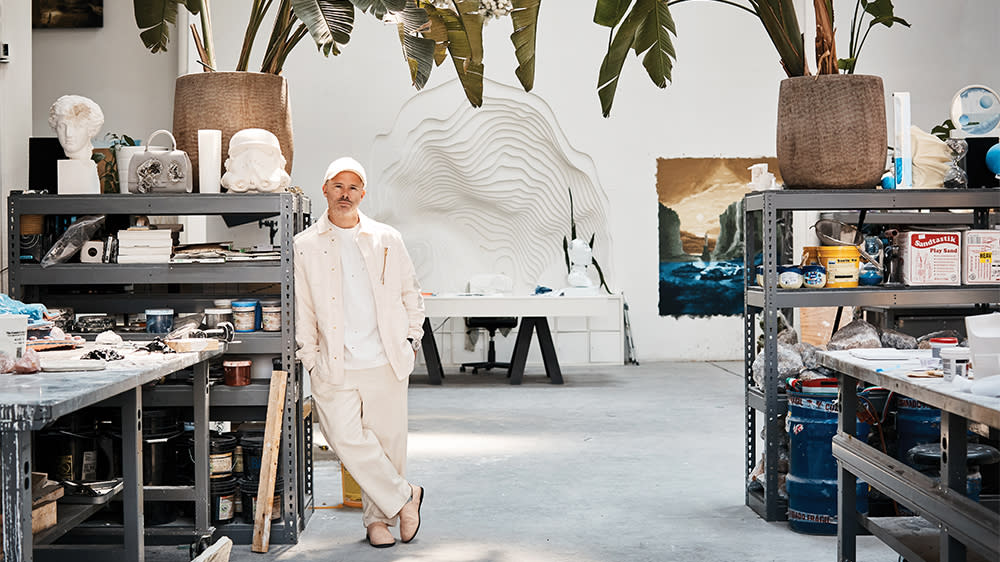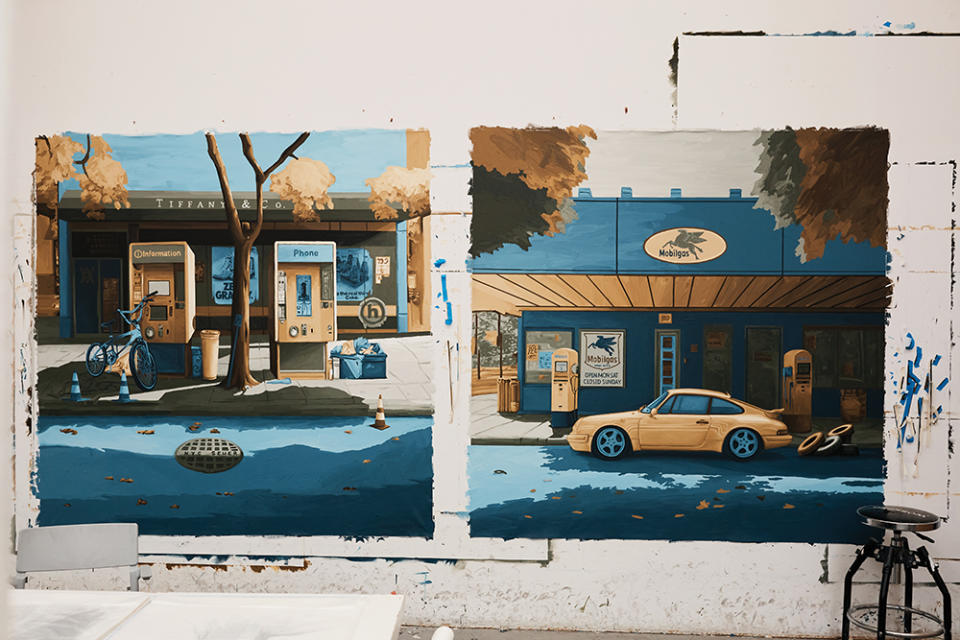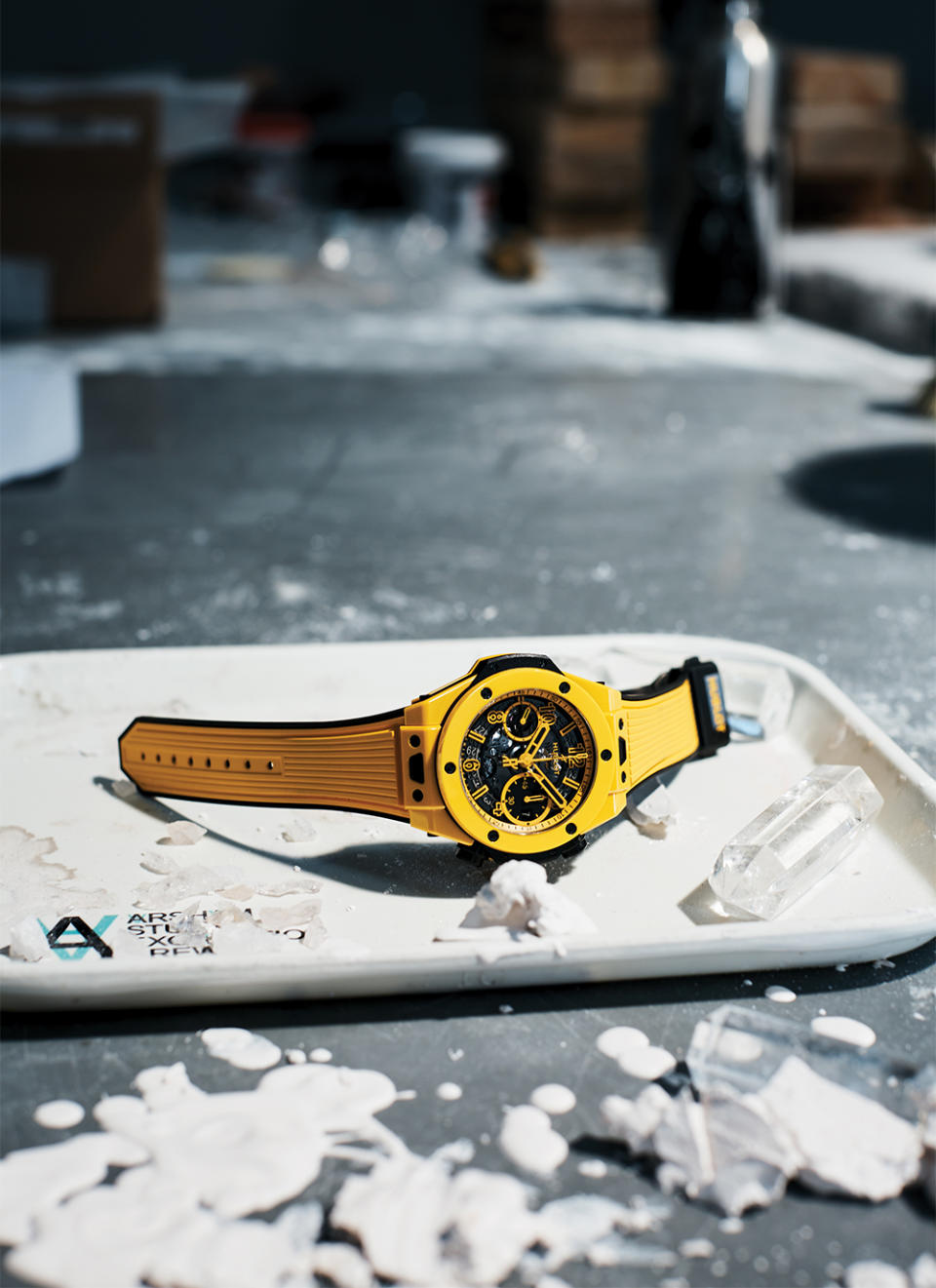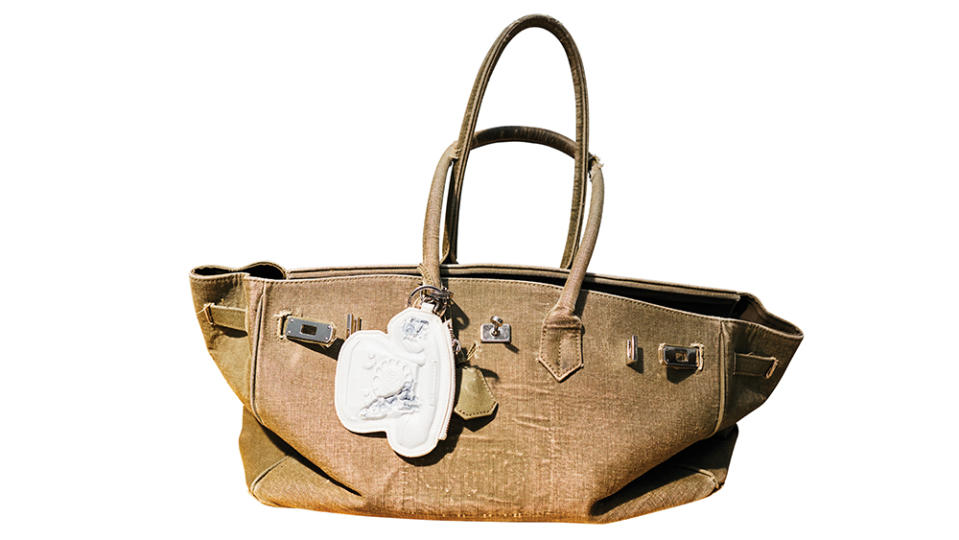Artist Daniel Arsham on His New Hublot Collaboration and the 1986 Porsche He Adores

New York–based artist Daniel Arsham gets a thrill from decay—the inevitable decline of ordinary objects. His works consist of eroded casts of human figures or cameras, radios, guitars, or teddy bears. He calls them future relics, or fossilized artifacts. Inevitably, his creativity has made Arsham, 42, a hot commodity. A recent collaboration with Hublot, called Light & Time, resulted in a 20-meter sundial made entirely of ice and snow that was installed (with the help of a team of professional snowmakers) at the top of a ski slope in Zermatt. And for those of you thinking of a chocolate teapot right now, that is, of course, the point: The work is temporary, perfectly marking the destructive nature of time.
His career, though, has been long-lasting, stretching over two decades and encompassing projects in Los Angeles, New York, Paris, Tokyo, Shanghai, and London, with a remarkably broad range of coconspirators: fashion designers Hedi Slimane of Celine and Kim Jones of Dior and Fendi, and global superstars such as Pharrell and Pokémon. He cofounded Snarkitecture, a studio that investigates the boundaries between art, architecture, and design, in 2008.
More from Robb Report
How Sports Memorabilia Exploded Into a Booming Billion-Dollar Business
John Lennon Once Owned This Grand Piano. Now It Could Fetch $3 Million at Auction.
Climate Protestors Vandalized a Portrait of King Charles in Scotland
First thing you do in the morning?
When I’m in New York, I go to my gym on Bond Street pretty much every day. I walk the 10 minutes to get there, and I do about 15 minutes of stretching on the roller. Then free weights for 20 minutes and then the bike. I wear an Apple Watch, and when it gets to 800 calories, I stop.
Do you have any personal rituals?
After the gym, I go to the studio, very regularly from 10 to 6, like office hours.
Last piece of advice you gave?
To a young artist, at my exhibition in Los Angeles. The question was, “How do I get to where you are?” And my advice was, “It takes 20 years.” He’s 20 years younger than me, so patience.

And the last advice you were given?
It was in a text that a friend sent me. I’ll read it to you: “Most people accept the world as a fixed reality. They do not care to find its edges. As an artist, you can create a space that is just beyond it, that reveals new ways of seeing and experiencing life. Some people will not accept that new reality. Do not be discouraged. It takes time.”
What advice do you wish you’d followed?
To be slower.
What do you do that’s still analog?
I write letters, and I draw with a pencil.
How would you describe your look?
Comfortable, I guess. My pants and a lot of my hats are my own brand, Objects IV Life.
What in your wardrobe do you wear most often?
An orange Hermès hat.
What watch are you wearing?
The Hublot Big Bang Tourbillon Automatic Yellow Neon Saxem. I have a small watch collection—maybe 10 pieces—including a couple of Hublot.

What do you most crave at the end of the day?
Wine. Any kind, really.
How do you find calm?
Being at the studio. It’s the place that I like the most, being at my desk and making drawings.
Who is your guru?
Someone who taught me a lot was Merce Cunningham. I worked for him for a long time. He was much older than me, and wiser, in a way. He had this ability to compress and expand time just through movement. That idea of playing with the way we perceive our own moments is something that I’ve carried into my own work as well.
What’s your favorite cocktail, and how do you make it?
Lately, it’s been a manhattan or an old-fashioned. I make it using Bulleit or Maker’s Mark.
What’s the most recent thing you’ve added to your collection?
A 1964 Porsche 356, black with red interior.

What’s the most recent thing you regret not buying?
Probably some CryptoPunks NFTs, like five years ago, when I was offered them.
Who is your dealer, and what do they source for you?
I buy and sell a lot of vintage cars, and I would consider my friend Matthew Ammirati to be my dealer. He doesn’t actually sell cars— he’s more of an adviser, sending me stuff all the time and telling me what to buy. He knows pretty much everything about Porsche. He’s a very good influence, because I buy what he tells me to buy, and then they’re worth a lot more later.
What does success look like to you?
The ability to choose your own projects and what you want to do. In any of my collaborations, it’s partly about the people and whether I think they’re going to go with me to the far end of what I’m trying to do. I’ve worked with Porsche for the last couple of years. It’s a very traditional company, but they allowed me to erode some of their cars in my sculptural works and really engage with design history.
How much do you trust your gut instinct?
Immensely. Immediately. I’ve been right about a lot of things that I have chosen to do—in work, materials—and when I’ve not trusted it, I’ve often been punished for that.
Drive or be driven?
Always drive.
What is the car you’re most attached to?
A 1986 Porsche 930. It was originally red; now it’s white.

When was the last time you completely unplugged?
Probably like 1992.
What is your email etiquette?
I don’t really use email anymore, because I have probably over 100,000 unread emails. I’m better on text. That’s my email etiquette.
What sort of music makes you happy?
Any really loud hip-hop.
Best of Robb Report
Sign up for Robb Report's Newsletter. For the latest news, follow us on Facebook, Twitter, and Instagram.


